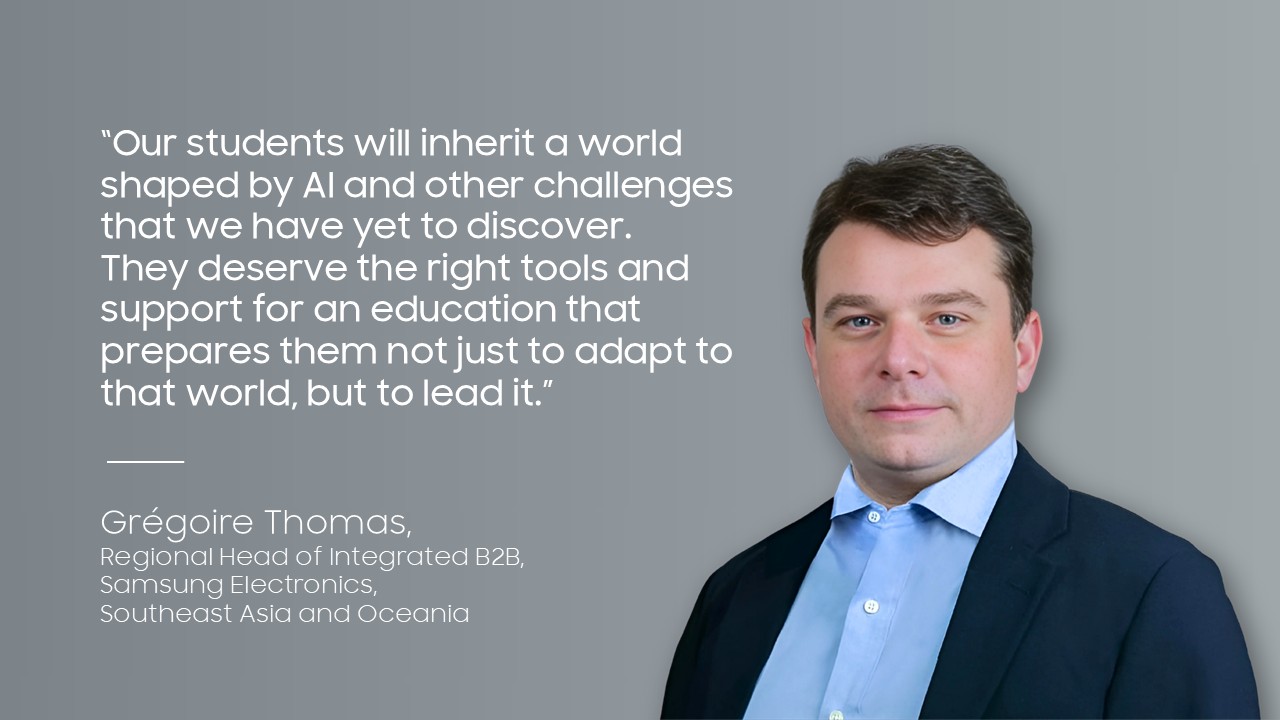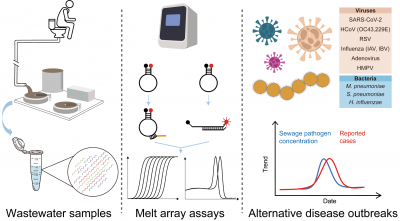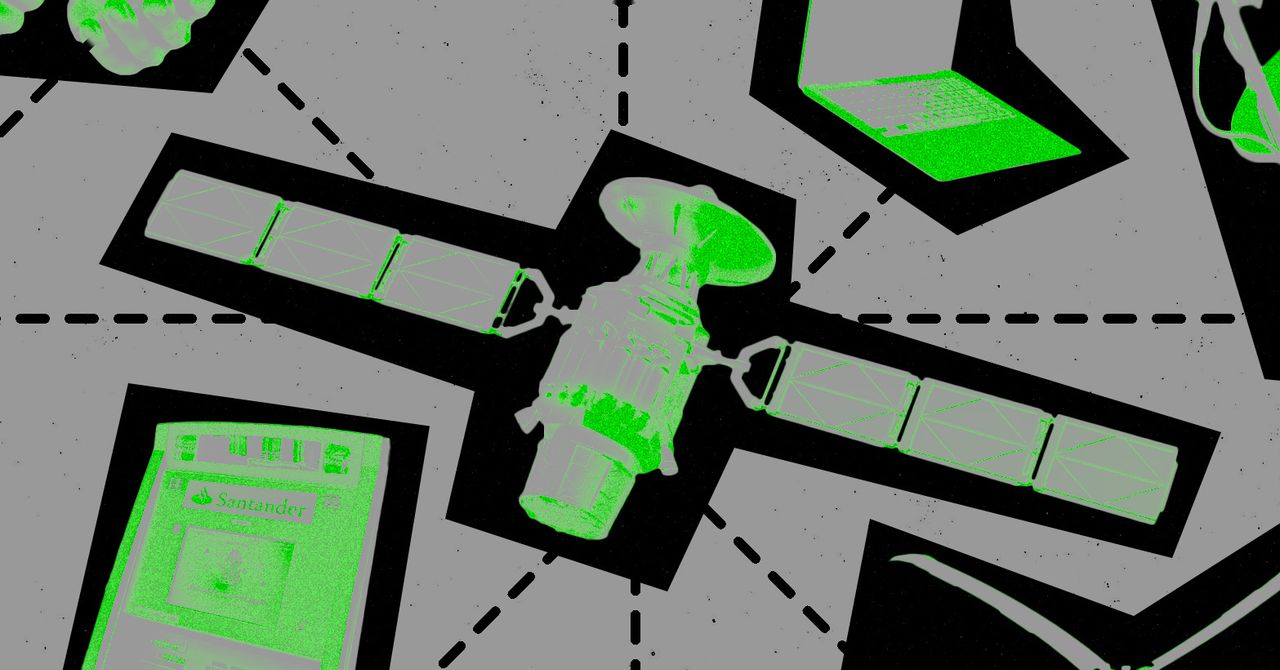By Grégoire Thomas, Regional Head of Integrated B2B, Samsung Electronics, Southeast Asia and Oceania
Picture this: a student in rural Indonesia collaborates on a science presentation with peers in Singapore and Thailand, using their AI-powered tablets to translate their respective languages for one another in real-time while an intelligent display in their classrooms brings their shared workspace to life. Far from being science fiction, these scenarios are already possible today, thanks to technology.
Working with educators across Southeast Asia and Oceania, I have had the privilege to witness a generation of digital-native students who don’t just use technology; but intuitively reach for it as something deeply embedded into their every day. Compared to preceding generations, these students approach problems differently, learn differently, and simply put, are also expecting their educational experiences to match the increasingly connected world that they will one day inherit from us.
This is not a question of whether technology belongs in education, but instead, whether we can be bold enough to reimagine how education can further grow thanks to technology.
Classrooms Powered by AI
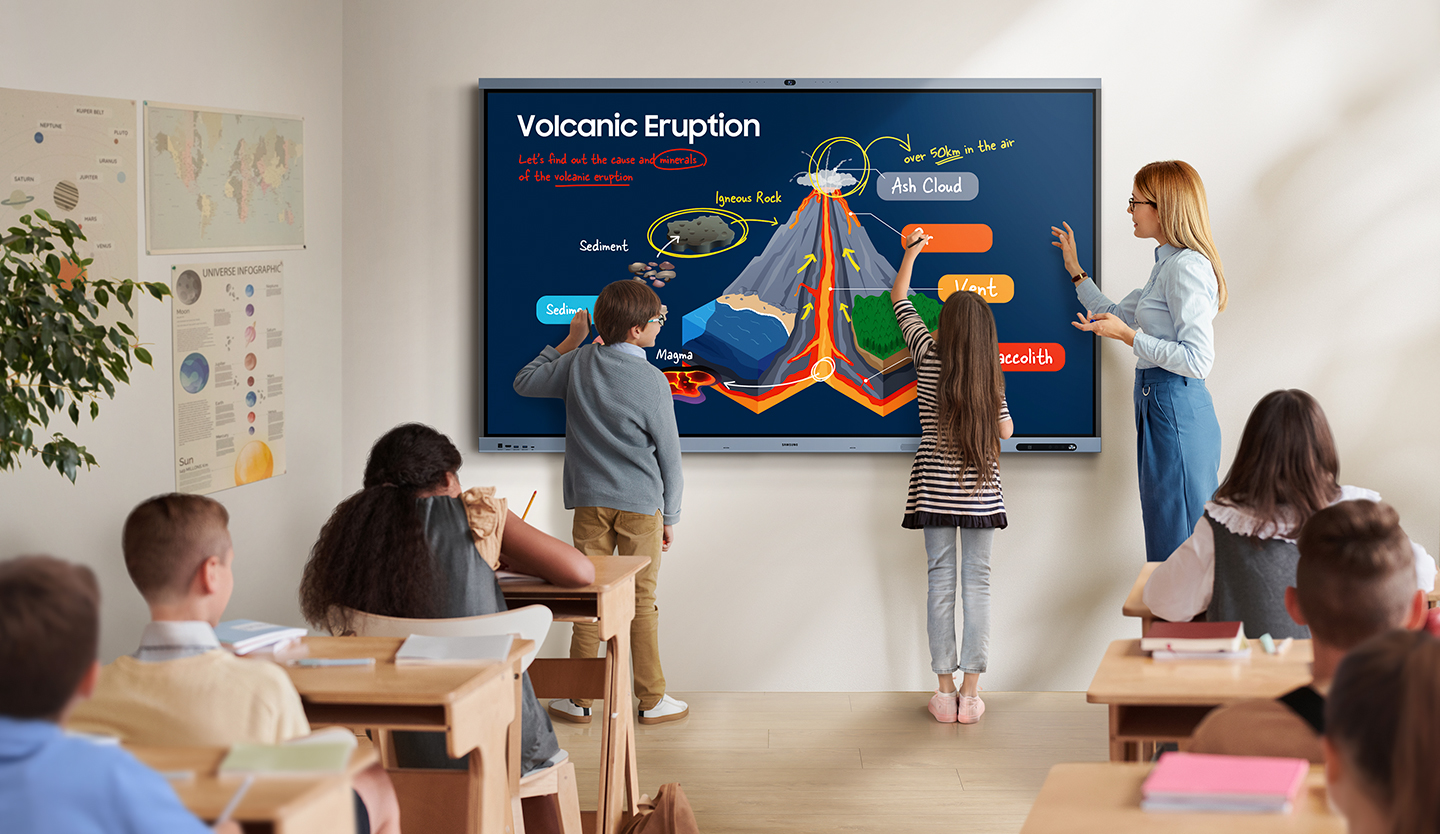
Samsung AI Assistant on the new AI-powered Interactive Display is built with intelligent, intuitive tools to organise lessons and collaborative learning
At Bett 2025 earlier this year, we unveiled something I’m genuinely excited about – our new AI-powered Interactive Display that integrates Samsung AI Assistant, equipping educators with more intelligent and intuitive tools to both organise and transform lessons.
Features like AI Summary help teachers create concise lesson recaps automatically, making planning much easier and simplifying post-class reviews for students. Meanwhile, Live Transcript converts conversations into text in real time for students to revisit and reinforce what they’ve learned in class. Armed with these tools, educators can transform lessons into dynamic and interactive experiences that maximise learning outcomes.
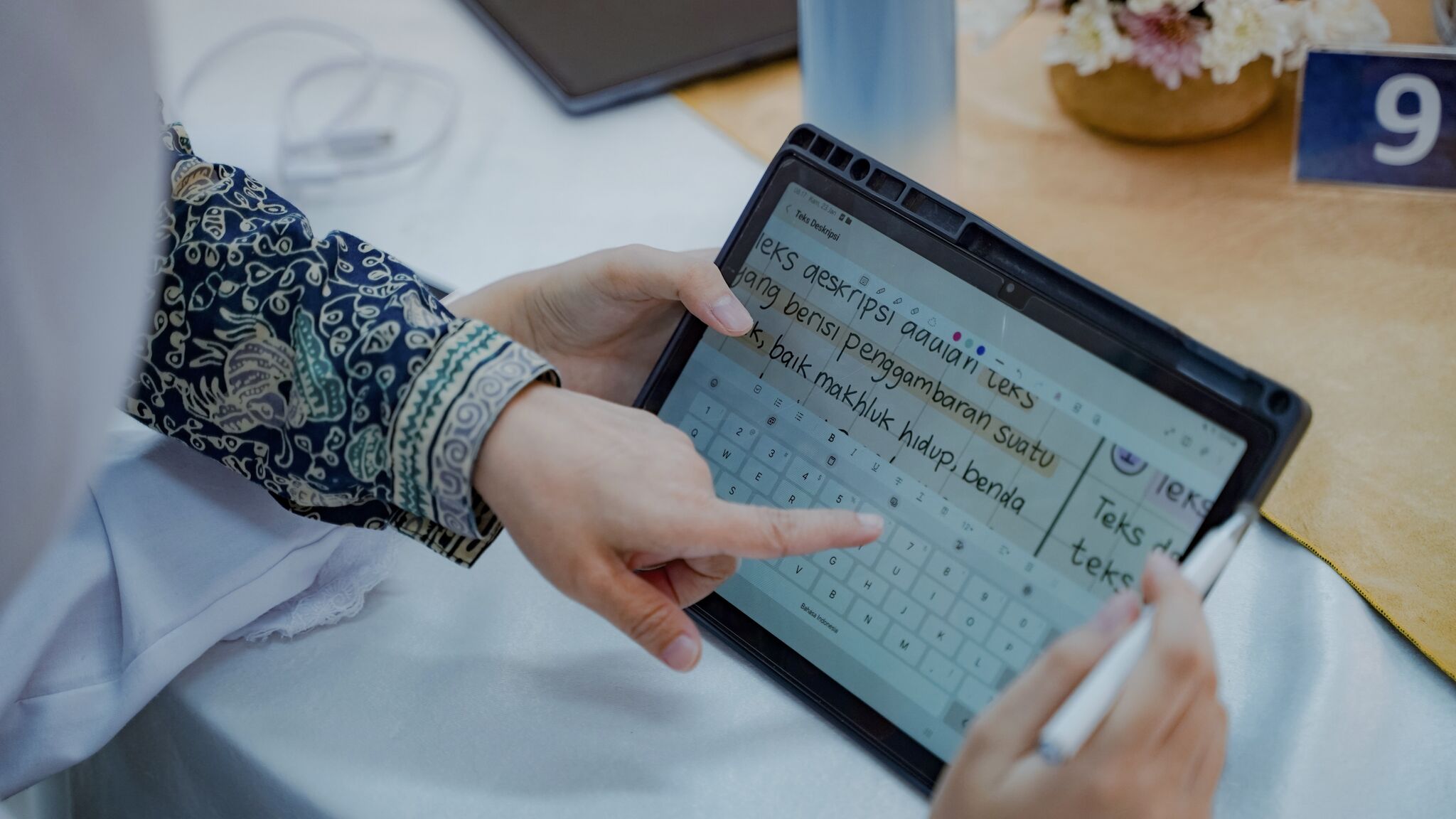
Students at Al Muslim Bekasi utilising the Samsung Notes app, with in-built Galaxy AI features
Furthermore, we recently rolled out the Samsung Digital Lighthouse School programme in Indonesia, starting with two schools: Al Muslim Bekasi and Salman Al Farisi Bandung. The programme aims to accelerate the digital transformation journeys of schools and enhance the learning experiences of over 2,500 students with AI-enabled Galaxy devices such as the Galaxy Tab S and A Series, with holistic protection by Samsung Knox.
At the end of the day, we want to have technology that inspires both educators and students to explore, discover and collaborate. Technology should not overshadow the human connection but instead, enhance it.
Equity and Ecosystems
A concern that many educators have with technology is equity and access. When done right, technology can bridge, instead of widen, the gaps.
When a student in Bandung accesses the same AI-powered learning tools as someone in Seoul; when language barriers are removed through real-time translation; and when personalised learning can be adapted to the different paces and styles of both teachers and students, that is democratisation in action. A decade ago, high-speed internet used to be accessible only to those who could afford it.; today, these technologies are well within reach of most students across our region. Technology for technology’s sake doesn’t solve anything; instead, it is about creating ecosystems that benefit everyone.
However, educators are also just as concerned about having the right solutions on hand to help them fully maximise that potential, not just for students, but also for teaching staff. We work with local Edutech partners for classroom device management, as well as change management support, to better enhance learning outcomes for students. These collaborations are built around the understanding that technologies, like tablets for classrooms, are only as transformative as the support system around them. After all, tools are only as good as the hands that wield them.
Working within the System, Not Against It
Beyond devices, software and services, it is extremely important to have a clear understanding of national education strategies, curriculum requirements, as well as the long-term vision for digital learning. We have been engaging and collaborating with education ministries across the region to ensure that initiatives are designed to support and integrate with these existing frameworks.
Our Samsung Learning Hub, launched in January, exemplifies this approach. This digital resource hub for educators offers online training, teaching materials, certifications, and a community to further support teaching and learning outcomes. For digital learning initiatives to succeed, they must aim to complement and not replace traditional teaching methods.
The Imperative for Collaboration
The future of education cannot be a solo act, but must be built through collaboration among educators, students, parents, policymakers, and technology companies like Samsung. Here is my challenge to everyone reading this: whether you are an educator frustrated by the limitations of current teaching methods, a policymaker grappling with budget constraints, or even a fellow technology professional looking to make a real difference:
Let’s stop talking about the future of education and start building it. Let’s be bold enough to experiment, humbly explore new innovations to figure out what works, and persist in our efforts to continue iterating until we get it right, together.
Our students today will inherit a world shaped by AI, climate change, and other challenges that we have yet to discover. They deserve an education that prepares them not just to adapt to that world, but to lead it. For that to happen, we must also ensure that they are both enabled and empowered with the right tools and support to drive better and more effective learning outcomes in this digital-first world. Are we ready to lead it together?
Experience the Future of Education with Samsung at Bett Asia
At Samsung, we believe in building the future of education together. We welcomed attendees to experience our vision in action at Bett Asia in Kuala Lumpur that happened from 1-2 October 2025, and discover how technology can enhance, not replace, the human connection in the classroom. Attendees had the opportunity to speak with our experts, see live demonstrations, and learn how Samsung is helping create dynamic, interactive, and equitable learning environments for the next generation.
Let’s start building tomorrow’s classroom, today.
